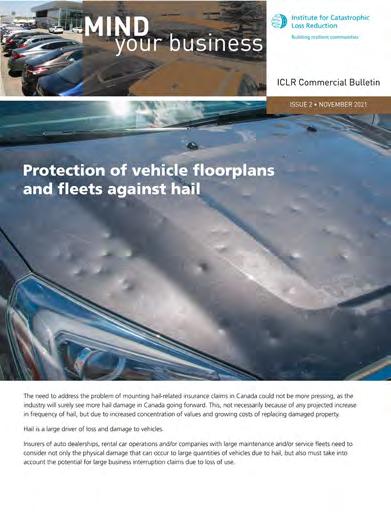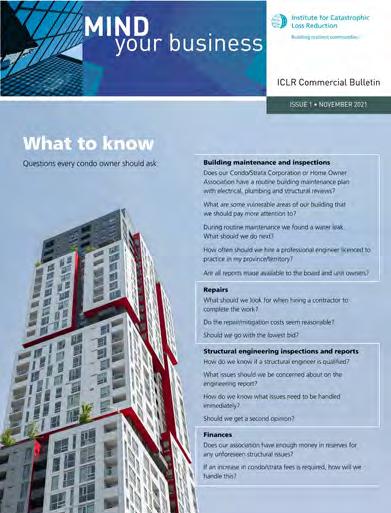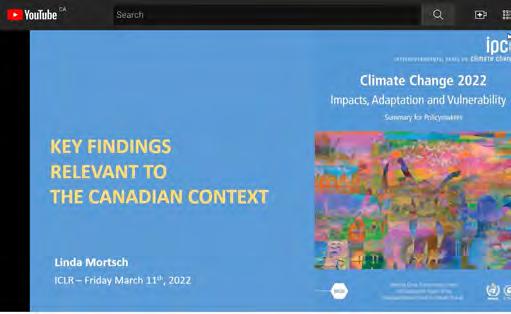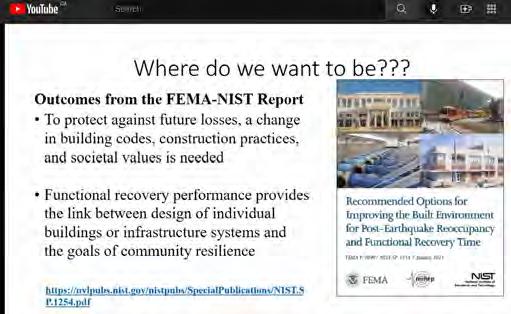
Institute for Catastrophic Loss Reduction Institut de prévention des sinistres catastrophiques Building resilient communities Bâtir des communautés résilientes The first 25 • ICLR 1997-2022 25
Letter from the Executive Director

This report celebrates the first 25 years of insurance industry leadership to advance the science of seismic and climate resilience through the Institute for Catastrophic Loss Reduction. My sincere thanks to the many individuals who have contributed to this remarkable journey of learning and service.
While celebrating what has been accomplished, the ICLR team is excited about the adventure ahead. The Institute is Canada’s leading disaster research centre and dedicated to champion implementation of resilience action based on science.
Natural hazards are powerful forces. They regularly demonstrate the capacity to cause fatalities and extensive destruction of property. This was evident in the Calgary flooding, Fort McMurray wildfire, and the impacts of Hurricane Fiona. Direct damage from extreme weather in Canada is increasing at a rate that is alarming and unsustainable.
Most losses are preventable. Implementing resilience knowledge significantly reduces the risk of damage. ICLR is working to champion progress on three critical elements to enhance seismic and climate resilience in Canada:
reduce the risk of loss for existing structures
prevent the creation of new risk
resilience in recovery
•
•
•
Most losses are preventable. Implementing resilience knowledge significantly reduces the risk of damage.
25 1
First, there are millions of homes and other buildings in Canada that can be made more resilient through retrofits. More than 95 percent of the homes in Canada, for example, do not have a backwater valve to reduce the risk of basement flooding if it was not included during initial construction. ICLR research identifies proven and cost-effective opportunities to introduce seismic and climate resilience features in existing structures.
Second, it is essential to build the right way at the right locations to prevent the creation of additional risk. Buildings and public infrastructure can become much more resilient during initial construction at little or no additional cost. The Institute is working with builders and governments to integrate resilience knowledge in new construction design and practices.
Third, we find that most resilience action takes place during recovery from a major loss. Homeowners, businesses, and governments seek to build back better. The Institute looks to contribute our knowledge and strong links with the insurance industry to seize this opportunity. There is potential for transformative improvement in resilience through recovery planning and practices.
Canada’s insurance industry created ICLR 25 years ago anticipating the need for science to support effective resilience action. Industry thought leadership about preparedness for a catastrophic earthquake and climate change included a commitment to build capacity for the rigorous study of critical perils and development of risk reduction solutions.
My thanks to Carol Jardine and the other members of the ICLR Board of Directors, past and present, for your unwavering support and thoughtful guidance. Thanks to our 120 member insurers and many government agencies that support our work. A special thank you to the ICLR staff and research associates as they demonstrate every day their commitment to build resilience in Canada based on science.
We celebrate our accomplishments of the first 25 years with a keen sense of the need to implement solutions in the years ahead.
Paul Kovacs Executive Director, ICLR
25 2
Letter from the Chair
It was 25 years ago that families and businesses in Quebec and Eastern Ontario were hit by a devastating ice storm, one that remains among the top three largest insured events in Canadian history. For leaders in the insurance industry, it was clear that severe weather was increasing and more must be done to help Canadians.
Insurance leaders stepped-up, partnered with leading engineers, climate scientists and others at Western University, and created the Institute for Catastrophic Loss Reduction, formed as a non-profit, science-based research institute committed to helping Canadians take a more active role in defending themselves and their communities from severe weather and catastrophic loss.

Today, 120 insurance companies are ICLR members. Oversight is provided by the Board of Directors, which includes elected members from insurance companies as well as representatives appointed by Western University. In the last 25 years, these forward-thinking insurance leaders, academic experts, and the dedicated ICLR team have created a trusted scientific body, one with international respect and a growing list of accomplishments that benefit Canadians.
As global warming tested the ability of municipal infrastructure to manage the impact of increasing rain and overland flooding, insurance companies saw water replace fire as the most concerning peril. ICLR undertook extensive research and worked with municipalities to create prevention materials for homeowners on basement flooding. At the same time, ICLR advanced work on wind, hail, earthquake, and wildfire, and ICLR’s research has enabled insurers to offer new products to make properties in Canada more resilient from these perils. From the Insurance Research Lab for Better Homes and other research at Western and ICLR have come recommendations regarding adding hurricane straps, building code improvements in roofing materials along with hail resilient shingles and siding. ICLR’s work in partnership with Canadian municipalities has increased the level of awareness that local governments have of the impact of climate change on their communities, empowering their advocacy work and informing new infrastructure investments that better protect people and property.
25 3
But our work is far from done. As weather events continue to grow in frequency and ferocity, insurers, academics, and scientists are committed to the importance of this work and its value to Canadians.
I applaud the foresight of the leaders 25 years ago who built this coalition and those who continue to support and fund the Institute. As a 40-year veteran of the Canadian insurance industry, our ability to work together for the betterment of our country is as humbling as it is inspiring.
As we look ahead to the next 25 years, ICLR’s value has never been greater. Climate change is now accepted. Adaptation and resiliency are discussed and foremost in the minds of insurers and Canadians. ICLR will and must continue to provide the science and knowledge to help us all adapt to a warmer planet and chart a more climate resilient future for our children and grandchildren.
ICLR’s research has enabled insurers to offer new products to make properties in Canada more resilient from perils.
Carol Jardine, ICLR Board Chair President, Canadian P&C Operations, Wawanesa Mutual Insurance
25 4
The birth of an Institute
In late 1996 member insurers of the Insurance Bureau of Canada (IBC) decided that the insurance industry needed to more actively promote measures that protect homes and businesses across Canada from severe weather and earthquake. This would build on recent IBC work to ensure that the industry was financially prepared for a major temblor.
To lead this initiative, IBC established a committee of Chief Executive Officers, chaired by Terry Squire, then CEO of The Co-operators. Other industry leaders that volunteered their time to this committee included: Howard Moran, Commercial Union; Bill Green, Federated Insurance; Gregg Hanson, Wawanesa; and David Wilmot, Frankona.
An IBC staffer was assigned the task of assisting Paul Kovacs, then Senior Vice President, Policy Development and Chief Economist at IBC, in providing support to the committee.
IBC staff presented the CEO Committee with a number of options to promote investments in catastrophic loss reduction. Among the options considered included, among other things:
• Public education campaigns to invest in specific safety products
• Lobby for tax credits to encourage homeowners to make investments that would make their homes more disaster-resilient
• Consider exclusions on homeowners insurance to reduce insurance risk
•
Strengthen building codes
• Improve municipal building code enforcement
• Invest in improved weather forecasting, and
• Encourage governments to invest in improving infrastructure in Canadian cities
A presentation that captured the committee’s interest came from the President of the Insurance Institute for Property Loss Reduction (now known as the Insurance Institute for Business and Home Safety), Eugene Lecomte. IBHS was the organization founded by the U.S. insurance industry to promote investment in loss mitigation.
Mr. Lecomte described his Institute’s signature program to promote the building of new homes that are more resilient to damage from severe weather and earthquakes. Interest in the program grew following extensive losses due to Hurricane Andrew in 1992.
From these discussions, the CEO Committee made the important decision that a dedicated, research-based and sustained effort to protect Canadians was needed. With this decision, the Institute for Catastrophic Loss Reduction was born and staff began preparing a business plan for the approval of IBC’s Board of Directors. That plan was approved in the summer of 1997.
25 5
In that first year, more than 80% of IBC’s member insurers agreed to be members of ICLR. The IBC CEO Committee became the first ICLR Board of Directors.
Paul Kovacs was appointed Executive Director. Tracy Waddington and Alan Pang joined ICLR shortly thereafter and together formed the core of ICLR in those early years.
These three people were responsible to implement ICLR’s work in the four key result areas outlined in the original business plan:
Provide research to build safer communities
Conduct research to identify and promote cost-effective approaches so new structures can be built and existing structures retrofitted to better withstand future catastrophes.
Establish safety partnerships
Provide a forum for the insurance community and concerned allies to work together to reduce the human and financial cost of natural disasters, and to act as a resource for the study of natural perils.
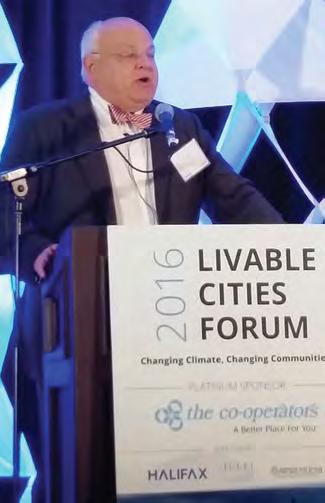
Enhance industry awareness
Promote awareness within the insurance community of effective disaster risk management practices through targeted research and dissemination of information.
Promote consumer awareness
Enhance, through the Insurance Bureau of Canada, consumer awareness of the benefits of prevention as a means of reducing loss due to catastrophes.
With these initial key result areas, the CEO Committee provided a focused path that ICLR has expanded on over the years.
The Institute’s first major project was with Emergency Preparedness Canada. EPC asked ICLR to hold five workshops across Canada to document gaps in Canada’s emergency response framework. Following these workshops, ICLR documented the country’s strength in disaster preparedness and response. However, the participants of these workshops reported that our national effort to reduce the impact of natural hazards was, at best, sporadic and uncoordinated. This could only be remedied by developing a National Disaster Mitigation Strategy. ICLR presented this report to the Government of Canada in the fall of 1998. This report resulted in an announcement by then Prime Minister Jean Chretien that EPC would develop such a strategy.
This initial success raised awareness about risk reduction within the disaster management community and its researchers and raised ICLR’s profile.
ICLR Executive Director Paul Kovacs speaks at ICLEI Canada’s Liveable Cities Forum 2016 in Halifax, Nova Scotia.
25 6
In 1999, universities that sought to partner with the insurance industry approached ICLR. These universities were seeking to make a proposal to the Ontario Challenge Fund. This was a pool of money that the Ontario government set aside to encourage applied research at universities.
Under this program, if a university matched every dollar contributed by the private sector into a dedicated research project, the province would match with an additional dollar. It meant that $1 of money from the insurance industry could, under the program, result in $3 of research at an Ontario university since ICLR had been established at arms length from IBC, yet was still managed by Canada’s insurers.

Two partnership proposals were seriously considered. They were from University of Toronto’s School of Environmental Studies and University of Western Ontario’s Faculty of Engineering. Both proposals would have resulted in significantly increasing research capacity at ICLR. However, the difference that led to the current partnership with Western is that insurers would retain a majority of ICLR’s Board of Directors and control of the Institute.
The partnership with Western resulted in a remarkable collaboration with Dr. Allan Davenport and his team at Western’s Boundary Layer Wind Tunnel (BLWT). This group was recognized as world leaders in wind engineering. Dr. Davenport’s pioneering research established the discipline of wind engineering and his knowledge and expertise was invaluable to ICLR.

The ongoing relationship with Western has provided the Institute access to a network of academic experts across Canada and leveraged the investment of the insurance industry into millions of dollars in research.
ICLR has gone on to build a world class research centre and Canada’s oldest university-based disaster risk reduction institute. In 2015, ICLR was named an IRDR International Centre of Excellence. ICLR is presently Chair of the Global Alliance of Disaster Research Institutes and was the inaugural Chair of the North American Alliance of Hazards and Disaster Research Institutes.
The Institute has established itself as a key voice and a valued source of evidence-based knowledge concerning the best practices to reduce risk of loss due to water, wind, hail, wildfire and earthquake.
ICLR Executive Director Paul Kovacs speaks to Canada’s Premiers at the Quebec Summit on Climate Change held in Quebec City on April 14, 2015.
Dr. Allan Davenport
25 7
Strategic priorities (2022-2026)
Be Canada’s leading provider of disaster research and loss reduction advice
The Institute will continue to build and share its knowledge about practices to reduce the risk of loss from major hazards in Canada.
Advocate for construction resilient to damage from severe weather and climate change
ICLR will press to include our understanding of the science in practices adopted by communities, homebuilders, the construction industry, governments and those responsible for building codes and standards.

ICLR numbered research paper series
Ice Storm ‘98
Eugene L. Lecomte
Alan W. Pang James W. Russell
December 1998
ICLR Research Paper Series – No. 1
Available for download at: http://www.iclr.org/winterstormicestorm98.html
Disaster Mitigation and Preparedness in a Changing Climate
James P. Bruce Ian Burton Mark Egener 1999
ICLR Research Paper Series – No. 2
Available for download at: http://www.iclr.org/climateextremedisasterm.html
Foreign earthquake insurance programs
Richard Roth Sr. 1999
ICLR Research Paper Series – No. 3
Available for download at: http://www.iclr.org/earthquakeforeigneqno.html
Psychosocial Aspects of Disaster Recovery: Integrating Communities into Disaster Planning and Policy Making
David Hutton 2001
ICLR Research Paper Series – No. 4
Available for download at: http://www.iclr.org/healthimpactspsychologic.html
Flood Management in Canada at the Crossroads Dan Shrubsole May 2000
ICLR Research Paper Series – No. 5
Available for download at: http://www.iclr.org/flooddroughtfloodmgmt.html
A review of the performance of two large sub-stations and eight large dams during the Chi Chi, Taiwan earthquake
Robin Charlwood
T.E. Little J.K. Lou
April 2000
ICLR Research Paper Series – No. 6
Available for download at: http://www.iclr.org/earthquakesubstations.html
The Media and Public Trust in Natural Disaster: The Canadian Experience: A Roundtable April 2000
ICLR Research Paper Series – No. 7
Available for download at: http://www.iclr.org/publicpolicypublictrust.html
Reflections on the future: Climate Change and its impacts on the insurance industry June 9, 2000
Angus Ross
ICLR Research Paper Series – No. 8
Available for download at: http://www.iclr.org/images/2000_June_AngusRoss_ Presentation.pdf
Hurricane Hazel and Extreme Rainfall In Southern Ontario
November 2000
ICLR Research Paper Series – No. 9
Available for download at: http://www.iclr.org/hurricanehazelpaper.html
L’état de préparation des intervenants en l’an 2000
Face à des pluies diluviennes comme celles du 14 Juillet 1987 (Montreal’s preparedness for flood)
Julie Boissonneau
Novembre 2000
Série de documents de recherche – No 10
Available for download at: http://www.iclr.org/flooddroughtletatdepr.html
25 22
Wildfires and insurance
Paul Kovacs
January 2001
ICLR Research Paper Series – No. 11
Available for download at: http://www.iclr.org/wildfireswildfiresinsura.html
Assessment of Risk Due To Fire Following
Earthquake Lower Mainland, British Columbia
Charles Scawthorn
January 2001
ICLR Research Paper Series – No. 12
Available for download at: https://www.iclr.org/wp-content/uploads/2018/07/ assessment-of-risk-due-to-fire-following-earthquake.pdf
Managing Catastrophic Risk: Lessons from Canada
Paul Kovacs
Howard Kunreuther
April 2001
ICLR Research Paper Series – No. 13
Available for download at: http://www.iclr.org/publicpolicymanagingris.html
Canada’s Hail Climatology: 1977 – 1993
David Etkin
Soren Erik Brun
April 2001
ICLR Research Paper Series – No. 14
Available for download at: http://www.iclr.org/haillightninghailclima.html
Weather Information and Road Safety Jean Andrey Brian Mills
Jessica Vandermolen
August 2001
ICLR Research Paper Series – No. 15
Available for download at: http://www.iclr.org/winterstormweatherinfo.html
Disaster Response Systems in Canada R. Kuban H. MacKenzie-Carey A.P. Gagnon 2001
ICLR Research Paper Series – No. 16
Available for download at: http://www.iclr.org/publicpolicydisasterres.html
Studies on the application of tuned liquid dampers (TLD) to upgrade the seismic resistance of structures A. El Damatty April 2002
ICLR Research Paper Series – No. 17
Available for download at: http://www.iclr.org/earthquakeliquiddampers.html
Management and maintenance practices of storm and sanitary sewers in Canadian Municipalities E. N. Allouche P. Freure
April 2002
ICLR Research Paper Series – No. 18
Available for download at: http://www.iclr.org/earthquakemanagementpra.html
Numerical Simulations of High Intensity Winds. Downburst Simulations Horia Hangan July 2002
ICLR Research Paper Series – No. 19
Available for download at: http://www.iclr.org/tornadonumericalsolutio.html
A Tornado Scenario for Barrie, Ontario
David A. Etkin et al
July 2002
ICLR Research Paper Series – No. 20
Available for download at: http://www.iclr.org/tornadotornadoscenario.html
25 23
Role of Remote Sensing in Disaster Management
Nirupama Agrawal
Slobodan P. Simonovic
September 2002
ICLR Research Paper Series – No. 21
Available for download at: http://www.iclr.org/flooddroughtremotesens.html
Adjusting to Policy and Fiscal Change: The Case of Land Use Planning in London, Ontario
Bridget Schulte-Hostedde
Dan Shrubsole
October 2002
ICLR Research Paper Series – No. 22
Available for download at: http://www.iclr.org/flooddroughtadjustingt.html
Mitigating Catastrophic Losses: Policies and Policy-Making at Three Levels of Government in the United States and Canada
Dan Henstra
Andrew Sancton
November 2002
ICLR Research Paper Series – No. 23
Available for download at: http://www.iclr.org/publicpolicymitigatingl.html
A spatial fuzzy compromise programming for management of natural disasters
Slobodan S. Simonovic
December 2002
ICLR Research Paper Series – No. 24
Available for download at: http://www.iclr.org/flooddroughtspacialfuz.html
Natural Hazards and the Canadian Insurance Industry
Mark Baker
December 2002
ICLR Research Paper Series – No. 25
Available for download at: http://www.iclr.org/publicpolicyhazardsand.html
Seismic Response of Structures with Underground Storeys
M. Hesham El Naggar
January 2003
ICLR Research Paper Series – No. 26
Available for download at: http://www.iclr.org/earthquakeseismicrespon.html
Insurance Securitization: Catastrophic event exposure and the role of insurance linked securities in addressing risk
Peter Carayannopoulos
Paul Kovacs
Darrell Leadbetter
January 2003
ICLR Research Paper Series – No. 27
Available for download at: http://www.iclr.org/publicpolicysecuritizati.html
An Assessment of Flood Risk Management in Canada
Dan Shrubsole et al
January 2003
ICLR Research Paper Series – No. 28
Available for download at: http://www.iclr.org/flooddroughtassessment.html
Natural Disaster Health Research Network: Workshop Summary
March 2003
ICLR Research Paper Series – No. 29
Available for download at: http://www.iclr.org/healthimpactsworkshopsu.html
Inventory of Disaster Management Education in Major Canadian Universities L. Falkiner
March 2003
ICLR Research Paper Series – No. 30
Available for download at: http://www.iclr.org/healthimpactsinventory.html
Climate Change, Natural Hazards and Cities
Gordon McBean
Dan Henstra
March 2003
ICLR Research Paper Series – No. 31
Available for download at: http://www.iclr.org/climateextremecities.html
Wind Loads on Houses: A wind tunnel study
L.M. St. Pierre et al
July 17, 2003
ICLR Research Paper Series – No. 32
Available for download at: http://www.iclr.org/tornadowindloads.html
25 24
Collisions, Casualties, and Costs: Weathering the elements on Canadian Roads
Jean Andrey Brian Mills
July 3, 2003
ICLR Research Paper Series – No. 33
Available for download at: http://www.iclr.org/winterstormcrashes.html
Earthquake Planning for Business: A Guide for Business in British Columbia
Emergency Preparedness for Industry & Commerce Council
ICLR Research Paper Series – No. 34
Available for download at: http://www.iclr.org/earthquakeearthquakepla.html
Reliability of steel frame systems with semi-rigid connections
H.P. Hong S. Wang September 2003
ICLR Research Paper Series – No. 35
Available for download at: http://www.iclr.org/earthquakesemirigid.html
The Role of Government in Services for Natural Disaster Mitigation
Dan Henstra Gordon McBean February 2004
ICLR Research Paper Series – No. 36
Available for download at: http://www.iclr.org/publicpolicyroleofgovt.html
Wind Loads on Houses: Destructive Model Testing of a Residential Gable Roofed House
B. Visscher
G.A. Kopp
P.J. Vickery March 24, 2004
ICLR Research Paper Series – No. 37
Available for download at: http://www.iclr.org/tornadogableroof.html
Cyber-Incident Risk in Canada and the Role of Insurance
Paul Kovacs
Melissa Markham
Robert Sweeting
April 2004
ICLR Research Paper Series – No. 38
Available for download at: http://www.iclr.org/publicpolicycyberincede.html
Earthquake Hazard Zones: The relative risk of damage to Canadian buildings
Paul Kovacs
Robert Sweeting
June 2004
ICLR Research Paper Series – No. 39
Available for download at: http://www.iclr.org/earthquakehazard.html
Emergency Management and the August 14th, 2003 Blackout
Brenda L. Murphy
June 2004
ICLR Research Paper Series – No. 40
Available for download at: http://www.iclr.org/publicpolicyblackout.html
Toward a National Assessment of the Travel Risks Associated with Inclement Weather
Jean Andrey Michael Christie Sarah Michaels
Dan Unrau Brian Mills
June 2005
ICLR Research Paper Series – No. 41
Available for download at: http://www.iclr.org/climateextremeassess.html
Limits to Insurance
ISCU Workshop: Comet/Asteroid Impacts and Human Society
Paul Kovacs
Andrew Hallak
January 2005
ICLR Research Paper Series – No. 42
Available for download at: http://www.iclr.org/publicpolicymeteorites.html
25 25
Enhancing Local Level Emergency Management: The Influence of Disaster Experience and the Role of Households and Neighbourhoods
Brenda Murphy et al
July 2005
ICLR Research Paper Series – No. 43
Available for download at: http://www.iclr.org/tornadoenhancinglocal.html
Sewer Backup: Homeowner perception and mitigative behaviour in Edmonton and Toronto
Dan Sandink
November 2007
ICLR Research Paper Series – No. 44
Available for download at: http://www.iclr.org/flooddroughtsewerbackup.html
The resilience of the City of Kelowna: Exploring mitigation before, during and after the Okanagan Mountain Park Fire
Dan Sandink
January 2009
ICLR Research Paper Series – No. 45
Available for download at: http://www.iclr.org/wildfirescityofkelowna.html
Human dimensions of fire management at the wildland-urban interface in Alberta: A summary report
Tara K. McGee
Bonita L. McFarlane
Lauren Harris Hilary Faulkner
November 2009
ICLR Research Paper Series – No. 46
Available for download at: http://www.iclr.org/mcgeealbertapaper.html
Citizen participation in flood reduction planning: Strategic choices in Peterborough, Ontario
Greg Oulahen
Brent Doberstein
March 2010
ICLR Research Paper Series – No. 47
Available for download at: http://www.iclr.org/peterboroughfloodpaper.html
Canadians at Risk: Our exposure to natural hazards
David Etkin, Editor
February 2010
ICLR Research Paper Series – No. 48
Available for download at: http://www.iclr.org/canadiansatrisk.html
Reducing the risk of earthquake damage in Canada: Lessons from Haiti and Chile
Paul Kovacs
November 2010
ICLR Research Paper Series – No. 49
Available for download at: http://www.iclr.org/lloydseq.html
Climate change information for adaptation
James P. Bruce
February 2011
ICLR Research Paper Series – No. 50
Available for download at: http://www.iclr.org/climateextremesbruce.html
Involving Homeowners in Urban Flood Risk Reduction: A Case Study of the Sherwood Forest Neighbourhood, London, Ontario
Dan Sandink
May 2011
ICLR Research Paper Series – No. 51
Available for download at: https://www.iclr.org/wp-content/uploads/PDFS/involvinghomeowners-in-urban-flood-risk-reduction.pdf
Urban flooding in Canada: Lot-side risk reduction through voluntary retrofit programs, code interpretation and by-laws
Dan Sandink
February 2013
ICLR Research Paper Series – No. 52
Available for download at: https://www.iclr.org/wp-content/uploads/PDFS/urbanflooding-in-canada.pdf
25 26
Best practices for reducing the risk of future damage to homes from riverine and urban flooding: A report on recovery and rebuilding in southern Alberta
Paul Kovacs
Dan Sandink
September 2013
ICLR Research Paper Series – No. 53
Available for download at: https://www.iclr.org/wp-content/uploads/PDFS/bestpractices-for-reducing-the-risk-of-future-damage-tohomes-from-riverine-and-urban-flooding.pdf
Best practices guide: Management of inflow and infiltration in new urban developments
Ted Kesik
February 2015
ICLR Research Paper Series – No. 54
Available for download at: https://www.iclr.org/wp-content/uploads/PDFS/bestpractices-guide-management-of-inflow-infiltration-in-newurban-developments.pdf
Risk reduction status of homes reconstructed following wildfire disasters in Canada
Alan Westhaver
September 2015
ICLR Research Paper Series – No. 55
Available for download at: https://www.iclr.org/wp-content/uploads/PDFS/riskreduction-status-of-homes-reconstructed-followingwildfire-disasters-in-canada.pdf
Why some homes survived: Learning from the Fort McMurray wildland/urban interface fire disaster
Alan Westhaver
March 2017
ICLR Research Paper Series – No. 56
Available for download at: https://www.iclr.org/wp-content/uploads/PDFS/why-somehomes-survived-learning-from-the-fort-mcmurray-wildlandurban-interface-fire-disaster.pdf
Assessing local mandatory measures to reduce flood risk and inflow & infiltration in existing homes
Joanna Kyriazis
Laura Zizzo
Dan Sandink
May 2017
ICLR Research Paper Series – No. 57
Available for download at: https://www.iclr.org/wp-content/uploads/PDFS/assessinglocal-mandatory-measures-to-reduce-flood-fisk-and-inflowinfiltration-in-existing-homes.pdf
Communicating Hurricane Risk in Eastern Canada: Enhancing the communication lines between the Canadian Hurricane Centre, municipalities and insurers
Paul Kovacs
Sophie Guilbault
Brian Pentz
August 2017
ICLR Research Paper Series – No. 58
Available for download at: https://www.iclr.org/wp-content/uploads/2018/08/ communicating-hurricane-risk-in-eastern-canadaenhancing-the-communication-lines-between-thecanadian-hurricane-centre-municipalities-and-insurers.pdf
Hail Climatology for Canada: An Update
David Etkin
February 2018
ICLR Research Paper Series – No. 59
Available for download at: https://www.iclr.org/wp-content/uploads/2018/03/hailclimatology-for-canada-an-update.pdf
The governance of climate change adaptation in Canada
Danny Bednar
Jonathan Raikes
Gordon McBean
February 2018
ICLR Research Paper Series – No. 60
Available for download at: https://www.iclr.org/wp-content/uploads/2018/04/ccaclimate-change-report-2018.pdf
25 27
Development permits: An emerging policy instrument for local governments to manage interface fire risk in a changing climate
Paul Kovacs
May 2018
ICLR Research Paper Series – No. 61
Available for download at: https://www.iclr.org/wp-content/uploads/2018/05/ Development-Permits_2018.pdf
Increasing High Wind Safety for Canadian Homes: A Foundational Document for Low-Rise Residential and Small Buildings
Dan Sandink Gregory Kopp Sarah Stevenson Natalie Dale April 2019
ICLR Research Paper Series – No. 62
Available for download at: https://www.iclr.org/wp-content/uploads/2019/04/ICLRWestern-SCC-Increasing-High-Wind-Safety-2019_EN.pdf
Fire following earthquake in the Montreal region
Charles Scawthorn August 2019
ICLR Research Paper Series – No. 63
Available for download at: https://www.iclr.org/wp-content/uploads/2019/11/ Montreal-fire-following-earthquake_E.pdf
Reducing the Risk of Inflow and Infiltration (I/I) in New Sewer Construction: A National Foundational Document for the Development of a National Standard of Canada
Barbara Robinson Dan Sandink
David Lapp November 2019
ICLR Research Paper Series – No. 64
Available for download at: https://www.iclr.org/wp-content/uploads/2019/11/ SCC_RPT_Norton-ICLR-EC-SCC-II-in-New-SewerConstruction-2019-11-20_ENG.pdf
Estimating the benefits of Climate Resilient Buildings and Core Public Infrastructure (CRBCPI)
Keith Porter
Charles Scawthorn
February 2020
ICLR Research Paper Series – No. 65
Available for download at: https://www.iclr.org/wp-content/uploads/2020/03/SPAClimate-resiliency-book.pdf
Developing a method for conducting wildland/urban interface fire case study research: A foundational document
Alan Westhaver
Steve Taylor November 2020
ICLR Research Paper Series – No. 66
Available for download at: https://www.iclr.org/wp-content/uploads/2020/11/ ForestWise-ICLR-SCC-WUI-Fire-Case-Study-ResearchNovember-2020.pdf
Fire following earthquake in the Vancouver region
Charles Scawthorn
November 2020
ICLR Research Paper Series – No. 67
Available for download at: https://www.iclr.org/wp-content/uploads/2020/11/ Vancouver-fire-following-earthquake-E.pdf
Developing an Efficient and Cost-Effective Inflow and Infiltration (I/I) Reduction Program: A Foundational Document for the Development of a National Standard of Canada
Barbara Robinson
Dan Sandink
June 2021
ICLR Research Paper Series – No. 68
Available for download at: https://www.iclr.org/wp-content/uploads/2021/06/NortonICLR-SCC-Efficient-and-Cost-Effective-I-I-ReductionPrograms-2021_EN.pdf
25 28
An impact analysis for the National Guide for Wildland-Urban Interface Fires
Keith Porter Charles Scawthorn Dan Sandink
May 2021
ICLR Research Paper Series – No. 69
Available for download at: https://www.iclr.org/wp-content/uploads/2021/05/ ICLR-SPA-Risk-Impact-Analysis-for-the-National-WUI-FireGuide-2021.pdf
Building climate resilient communities: Living within the earth’s carrying capacity
Gordon A. McBean Paul Kovacs
James A. Voogt Gregory A. Kopp Sophie Guilbault
July 2021
ICLR Research Paper Series – No. 70
Available for download at: https://www.iclr.org/wp-content/uploads/2021/08/Western%E2%80%93-Climate-resiliency-book.pdf
Enhancing the acceptability of buyouts for climate change adaptation: Exploring a social license approach for Erie Shore Drive, Ontario
Sara Bohnert Brent Doberstein
January 2022
ICLR Research Paper Series – No. 71
Available for download at: https://www.iclr.org/wp-content/uploads/2022/01/
Enhancing-the-acceotability-of-buyouts-for-climatechange-adaptation-Erie-Shore-Drive.pdf
Benefit-cost analysis of impact-resistant asphalt shingle roofing
Keith Porter
March 2022
ICLR Research Paper Series – No. 72
Available for download at: https://www.iclr.org/wp-content/uploads/2022/04/Benefitcost-analysis-of-Impact-resistant-asphalt-shingle-roofing2.pdf
An examination of the Lytton, British Columbia
wildland-urban fire destruction
Jack D. Cohen
Alan Westhaver
May 2022
ICLR Research Paper Series – No. 73
Available for download at: https://www.iclr.org/
25 29
Institute for Catastrophic Loss Reduction Institut de prévention des sinistres catastrophiques
Toronto office 20 Richmond Street East Suite 210 Toronto, Ontario, Canada M5C 2R9 416-364-8677 416-364-5889


London Office
Western University Amit Chakma Building, Suite 4405 1151 Richmond Street London, Ontario, Canada N6A 5B9 519-661-3234 519-661-4273 info@iclr.org www.iclr.org www.PIEVC.ca facebook.com/instituteforcatastrophiclossreduction twitter.com/iclrcanada • twitter.com/citiesadapt youtube.com/iclrinfo
Search: Institute for Catastrophic Loss Reduction (ICLR) www.basementfloodreduction.com www.reduirelesinondationsdesous-sol.com www.backwatervalveinstallation.com











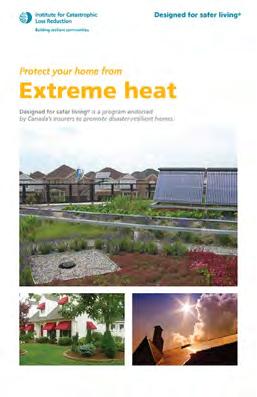







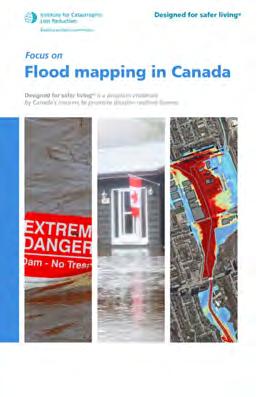

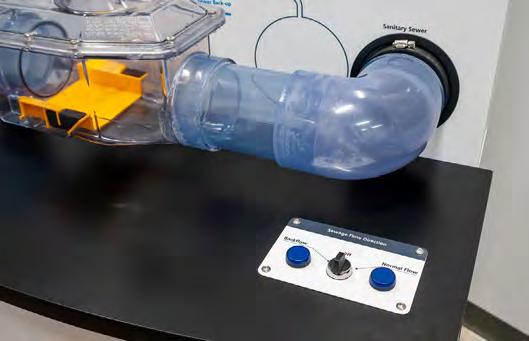











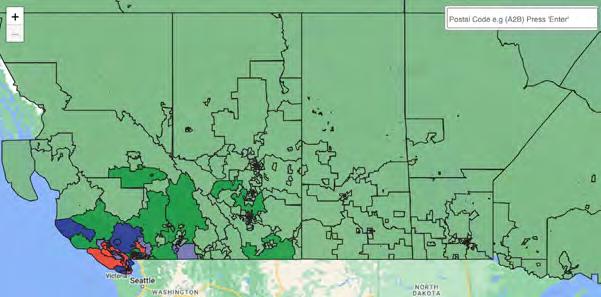
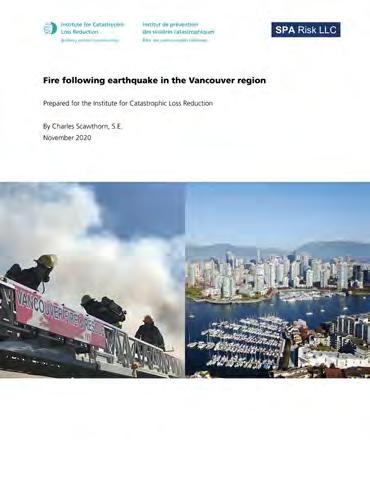





 Intensity-Duration-Frequency Climate Change Tool (IDFCC)
ICLR/University of Guelph’s
Intensity-Duration-Frequency Climate Change Tool (IDFCC)
ICLR/University of Guelph’s



